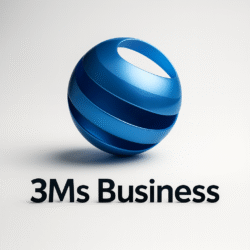
Understanding Product Costing: The Foundation of Profitability
Product costing is a critical component of any business strategy, serving as the foundation upon which profitability is built. It encompasses the total costs incurred in the production of goods, including direct materials, direct labor, and overhead. By accurately assessing these costs, businesses can construct reliable pricing strategies that not only cover expenses but also yield profits.
Direct materials refer to the raw materials that are directly used in manufacturing a product. The cost of these materials directly impacts the overall product costing. When businesses evaluate their inventory and suppliers, they must consider the cost fluctuations that can occur in material prices. Direct labor, on the other hand, represents the wages of employees who are directly involved in the production process. This includes not only the base salaries but also additional costs such as benefits and overtime pay.
Overhead costs are equally crucial and often overlooked in product costing calculations. These indirect costs can include utilities, rent, depreciation, and administrative expenses related to the production process. Understanding how to allocate overhead appropriately is essential to achieving an accurate assessment of product costs.
To calculate product costs effectively, businesses should utilize various costing methods such as job order costing, process costing, or activity-based costing. Each of these methods brings a different perspective on cost allocation depending on operational needs. By analyzing both variable and fixed costs, organizations can arrive at a comprehensive understanding of their product costing, which subsequently informs pricing strategies and business decisions.
Ultimately, mastering product costing equips businesses with the insight needed to enhance profitability, improve financial health, and strategically navigate market challenges. This foundational understanding not only supports better pricing decisions but also informs resource management and operational efficiency.
Strategies for Effective Product Costing
Effective product costing is pivotal for ensuring profitability and long-term success in any business. One essential strategy is conducting a thorough competitive analysis. This involves examining competitors’ pricing structures, cost drivers, and strategic positioning. By understanding the pricing strategies of competitors, businesses can position their own products more effectively, potentially leading to improved market share and profitability. In addition to this external benchmarking, an internal review of cost elements—such as production, labor, and overhead—can reveal inefficiencies that can be improved.
Another critical approach to optimizing product costing is the implementation of robust cost control techniques. Utilizing methods such as activity-based costing (ABC) can provide a more accurate allocation of indirect costs to products, which in turn enables businesses to identify unprofitable items in their product line. Regular financial audits and variance analyses can help businesses monitor discrepancies between estimated and actual costs, allowing for timely adjustments to strategies. This proactive approach not only helps keep costs in check but also supports more informed pricing decisions based on accurate cost information.
The advancement of technology has also transformed product costing processes. Modern software solutions enable real-time tracking of operational costs, enhancing data accuracy and facilitating better decision-making. Tools like enterprise resource planning (ERP) systems integrate various business processes, allowing for a comprehensive view of costs across departments. Furthermore, cloud-based solutions can provide scalability and accessibility, ensuring that costing data is available for quick analysis. Real-world examples of companies leveraging these technologies have shown significant improvements in financial outcomes and operational efficiency.
By employing these strategies, businesses can refine their product costing processes, ultimately leading to better financial control and enhanced profitability.
Common Pitfalls in Product Costing and How to Avoid Them
Effective product costing is critical for a company’s success, yet many organizations stumble on common pitfalls that can distort their financial assessment. One major mistake is the misallocation of costs. Organizations often fail to accurately allocate both fixed and variable costs to their products. This can lead to misrepresentation of product profitability. To avoid this, businesses should carefully analyze cost behavior and ensure that all relevant expenses are accurately allocated to specific products based on their actual utilization of resources.
Another frequent error in product costing is the neglect of updating cost data regularly. Economic conditions and market dynamics fluctuate, making it essential for companies to revise their costing practices periodically. Sticking to outdated cost data can result in inaccurate pricing strategies and misinformed financial decisions. To remedy this, organizations should establish a systematic schedule for reviewing and updating cost information, embracing tools such as cost management software to facilitate accuracy and efficiency in data maintenance.
Additionally, companies often overlook considering all relevant cost factors when determining product costs. For example, indirect costs like overhead, administrative expenses, and distribution costs may be ignored, leading to an incomplete view of product profitability. It is crucial for businesses to conduct a comprehensive cost analysis that includes all direct and indirect factors. Involving cross-functional teams can also enhance the view of possible cost factors and encourage collaboration in the costing process.
Recognizing these pitfalls in product costing allows companies to adopt a more strategic approach, enhancing their financial assessment and ultimately supporting profitability. By addressing cost misallocation, ensuring regular updates to cost data, and including all relevant cost factors, organizations can significantly strengthen their product costing practices.
Leveraging Product Costing for Competitive Advantage
In the contemporary business landscape, effective product costing emerges as a pivotal strategy for gaining a competitive advantage. By meticulously analyzing costs associated with each product, businesses can derive crucial insights that influence pricing strategies and overall market positioning. This strategic approach enables companies to not only optimize their pricing structures but also align them with the perceived value of their offerings, ensuring profitability while remaining attractive to consumers.
Integrating product costing insights into pricing strategies is essential for maximizing profitability. Businesses can leverage detailed cost data to identify which products yield the highest margins and which may be underperforming. This strategic visibility allows for well-informed decisions on pricing adjustments, ensuring that prices reflect the true value of the products while still appealing to the target market. Moreover, a robust understanding of product costs facilitates differentiated pricing strategies, enabling businesses to cater to different customer segments effectively, balancing affordability and value.
Furthermore, communicating cost efficiencies to customers and stakeholders is equally crucial. When businesses transparently share their cost management practices, it builds trust and demonstrates commitment to delivering value. Customers are increasingly interested in understanding how their purchases contribute to a company’s sustainability and efficiency efforts. By showcasing how effective product costing leads to lower production costs or improved quality, companies can foster brand loyalty. Customers are more likely to support brands that they perceive as being economically and ethically responsible.
Ultimately, mastering product costing is not merely about internal processes; it is about using this information strategically to maintain a competitive edge in the market. By aligning pricing strategies with comprehensive cost insights, businesses can achieve optimal profitability while enhancing customer trust and loyalty. The intersection of product costing and pricing ultimately becomes a cornerstone for sustained success in an ever-evolving marketplace.
- [2025 Max Full Body Cooling, Escape the Heat Instantly]: Step into a world of refreshing coolness! AICE LITE 2025 neck a…
- [Beat the Scorching Summer and Enjoy Chill Even in 105°F]: Say goodbye to unbearable summer heat! Powered by AICE MAX 4….
- [Effortless Comfort: AI Smart Cooling Adapts to You]: Enjoy effortless cooling with Metaura OS, the upgraded AI cooling …


